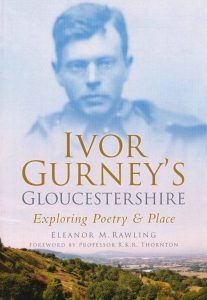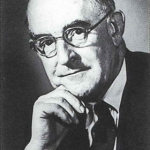It probably would come as a surprise for some to learn, that much of the planning for ADO concerts happens at least a year in advance of presenting the concert itself. In itself, this is actually fairly common practice for orchestras around the world; the preparation to put 60-100 players onstage to present a program having started long before the first note of music has been performed.
In the case of our forthcoming ‘A Foreign Field That is Forever England’ concert, the preparations have been even more time consuming, and involved many more people than is usual.
Firstly, without the very kind assistance of the Ivor Gurney Trust we would not be performing the composer’s A Gloucestershire Rhapsody. Specifically, the cooperation and willingness by former chairman of the Trust and composer, Ian Venables and the scholar and composer, Philip Lancaster to provide us with critically edited new performing materials has allowed us to prepare the work in the demanding and limited rehearsal schedule under which the ADO operates.
But then, how to explore the world of Ivor Gurney himself? Fortunately, one of the most interesting and inspiring books I have come across about Gurney was published in 2011 by Eleanor Rawling (see the book cover above left and click image for further details).
Predominantly covering the poetic works of this enigmatic British composer and poet, the book delves deeply into the very issue we are exploring in the up-coming concert: PLACE and LANDSCAPE. Fascinatingly, Eleanor describes this duality as a type of ‘regional geography’ through which “charactersitics of both physical and human features of a place are studied, with the aim of identifying a distinctive spirit or sense of place.” (p.11)
Reading Eleanor’s marvellous book allowed me insights into Gurney’s music that I might otherwise have missed. The most important of these is to understand that the layered historical geography of the Cotswolds also permeates the compositional layering of ideas in A Gloucestershire Rhapsody. The piece exhibits layers of musical complexity redolent of the music of R. Vaughan Williams another decade hence. The problem in performance is to make these layers of musical thinking transparent so as to be heard.
Within Eleanor’s study of the poetry of Gurney she has the good fortune to use the artwork of British illustrator, Roger Ellis. Some of Roger’s artwork from the book has graciously been licensed to us for use with our interactive Music Maps exploring the place and influences on Gurney’s musical output. Roger’s generosity is entirely consistent with the real kindnesses and support we have received in preparation for this concert.
So we turn to the music of Cecil Armstrong Gibbs.
Unlike the forensic music editing previously undertaken in the music of Gurney by Mssrs. Venables and Lancaster, the state of the music of Armstrong Gibbs in respect to performance materials is more complex. Consequently in 2015, we undertook the complete re-typsetting of the hand-written score and parts of the Symphony No. 3 in Bb, Op. 104 (Westmorland) from the original manuscript (not the publisher materials available available on hire which are unperformable). The original m.s. also showed up considerable differences to the publisher material which complicated matters still further.
Indisputably, the lack of performances of C. Armstrong Gibbs’ symphonies around the world is a function of the lack of available performable scores and parts. In this respect, we hope that our new critical edition of his ‘Westmorland’ symphony will encourage others to investigate the two very fine former symphonies which have been recorded by Naxos (Marco Polo) and Epoch (Dutton Digital) respectively.
Gibbs is often described as a second-tier composer not quite in the league of a Vaughan Williams, H. Howells, E. J. Moeran or even a William Alwyn (a topic for another posrt!) This is musicological wankery bordering on high-minded pomposity. Cecil Armstrong Gibbs is an absolutely first-rate composer. What is misunderstood is that his extreme economy in handling his compositional materials is interpreted as less inspired. Only another composer (or sometimes conductor) recognises that this ability to be succinct, but still structurally coherent and balanced, is the sign of a very great musical talent.
To create the Music Map of Gibbs’ ‘Lake District’ inspired symphony, we are fortunate to have discovered a young British illustrator, Laura Hallett. Laura had previously created her Cotswolds map, but she was gracious to create the Lake District illustration specifically for the ADO. So impressed with her work are we (in our best Yoda speak), Laura will be back next year for our ‘Rome’ inspired concert (yes, that is a teaser!)
You can check out more detailed programme notes on each of these pieces under the Stories tab on this website under ‘August 14 Concert Notes’ or just click here.
See you on August 14 in cyberspace.
Kevin Purcell


